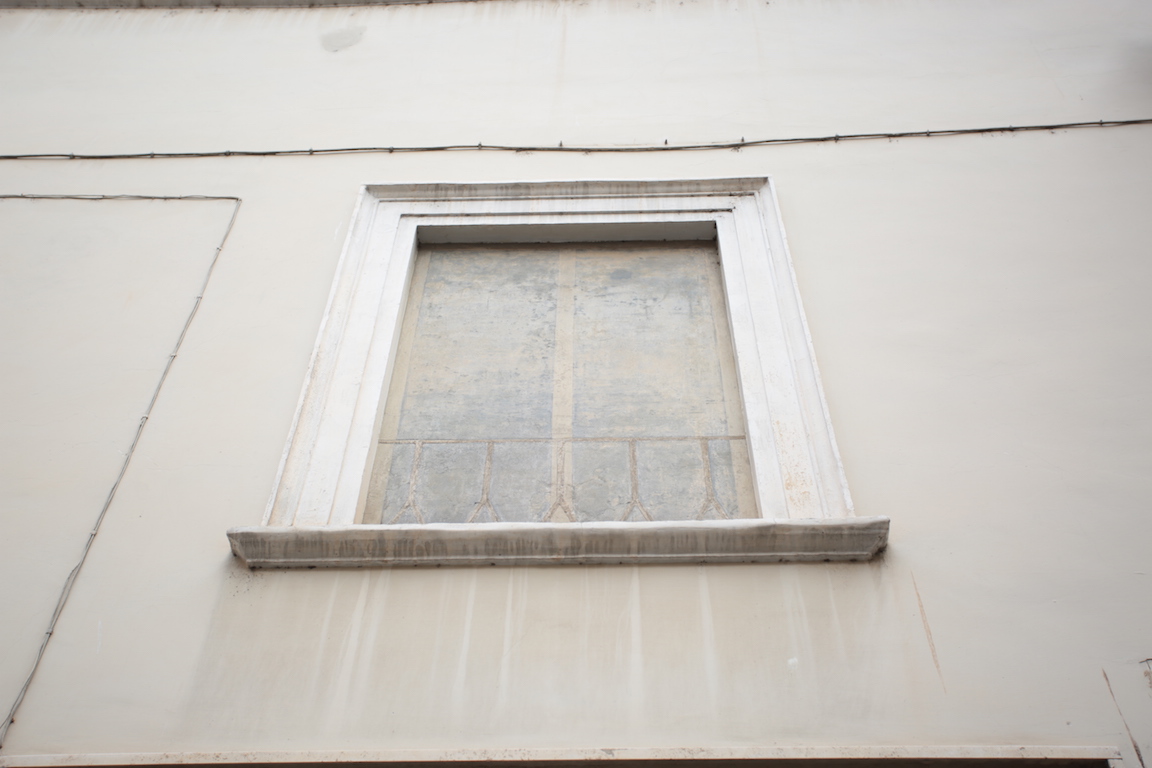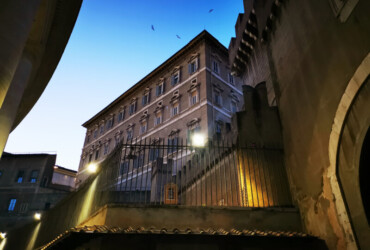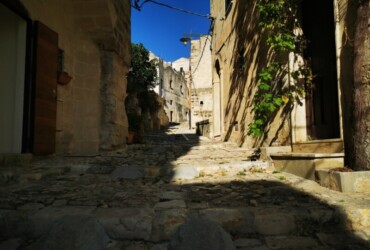Let’s go back to discover an unusual Rome, through some of the most hidden stories of the Italian capital. I’m starting to learn something about this “different” and unique Rome, learning a lot about some of the stories of its past.
Today I bring you to discover some of the unusual places and histories of Rome between the Jewish ghetto and the historic centre, starting from the ancient perimeter of the Ghetto fountain. It is located between Via del Portico d’Ottavia and Piazza delle Cinque Scole, where the fountain built in 1593 by the architect and sculptor Giacomo Della Porta was placed.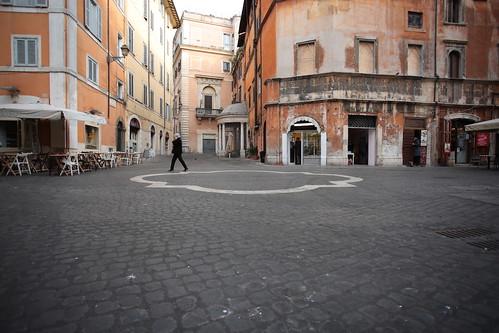 In 1880 the ghetto was dismantled, and the fountain was moved: first remained several years in the Municipality warehouses and then moved in front of the church of Santa Maria del Pianto, where it’s still today. Looking up from the perimeter of the fountain you will find, slightly to the right, Palazzo Manili, famous for the inscription on its façade. The building is made up of several buildings, purchased by Lorenzo Manili in 1468, probably with the aim of unifying them: Manili’s business failed, perhaps due to scarce funds, and the inscription stems from his desire to leave a sign of
In 1880 the ghetto was dismantled, and the fountain was moved: first remained several years in the Municipality warehouses and then moved in front of the church of Santa Maria del Pianto, where it’s still today. Looking up from the perimeter of the fountain you will find, slightly to the right, Palazzo Manili, famous for the inscription on its façade. The building is made up of several buildings, purchased by Lorenzo Manili in 1468, probably with the aim of unifying them: Manili’s business failed, perhaps due to scarce funds, and the inscription stems from his desire to leave a sign of
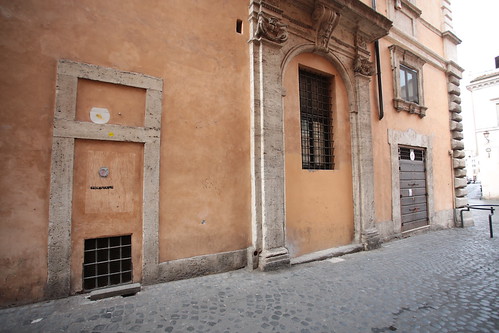 remembrance for future generations. Not far away from there, you can easily find Via Della Reginella, where there is the walled door of Palazzo Costaguti. The original structure of the building overlooked this road. When the ghetto was reorganised, the Costaguti reorganised their palace and moved the entrance to their mansion in order not to be subjected to the restrictions imposed on Jews, in particular, the closing of the doors when night fell.
remembrance for future generations. Not far away from there, you can easily find Via Della Reginella, where there is the walled door of Palazzo Costaguti. The original structure of the building overlooked this road. When the ghetto was reorganised, the Costaguti reorganised their palace and moved the entrance to their mansion in order not to be subjected to the restrictions imposed on Jews, in particular, the closing of the doors when night fell.
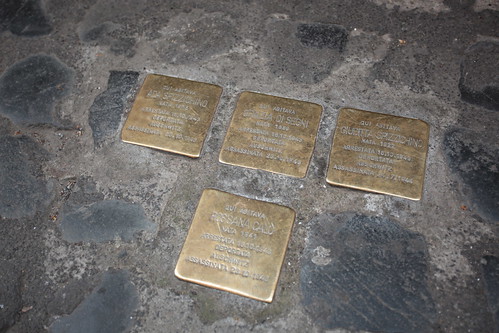 Neither unusual nor secret are the Stones of stumbling: these stones are brass sampietrini aimed at remembering the victims of the Nazi-fascist deportations; all these sampietrini are in front of the last house where the deportees lived and bear the name, date of birth and date of deportation. The idea came from the German artist Gunter Demnig to deposit and is an initiative that has been implemented in several European cities (in Rome there are several, not only those in via della Reginella).
Neither unusual nor secret are the Stones of stumbling: these stones are brass sampietrini aimed at remembering the victims of the Nazi-fascist deportations; all these sampietrini are in front of the last house where the deportees lived and bear the name, date of birth and date of deportation. The idea came from the German artist Gunter Demnig to deposit and is an initiative that has been implemented in several European cities (in Rome there are several, not only those in via della Reginella).
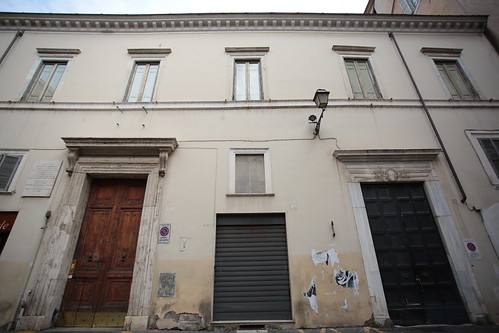 Piazza Mattei, at the end of via della reginella, is a land of stories and legends. The legend I want to tell you refers to the walled window of Palazzo Mattei, at number 19 of this square: it is said that Duke Mattei, one day, had lost almost everything to the game and the future father-in-law denied his daughter’s hand. The duke, to show that he was still a rich and powerful man, had the Turtles’ Fountain
Piazza Mattei, at the end of via della reginella, is a land of stories and legends. The legend I want to tell you refers to the walled window of Palazzo Mattei, at number 19 of this square: it is said that Duke Mattei, one day, had lost almost everything to the game and the future father-in-law denied his daughter’s hand. The duke, to show that he was still a rich and powerful man, had the Turtles’ Fountain
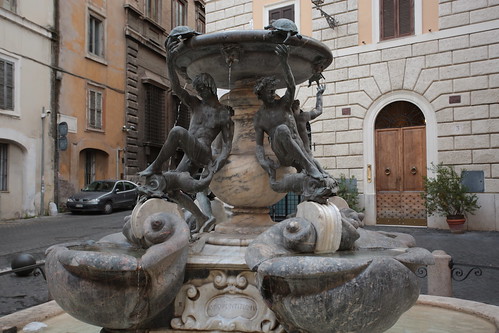 build in one night and, the next day, he asked his future wife and future father-in-law look out of a window. His father-in-law lets him marry his daughter and the window, then, was closed by the Duke so that no one could use it again in the future. The fountain dates back to 1585, and it seems that the initial project, by Giacomo Della Porta, provided for dolphins and not turtles (perhaps by Bernini). The original turtles, today, are preserved in the Capitoline Museums.
build in one night and, the next day, he asked his future wife and future father-in-law look out of a window. His father-in-law lets him marry his daughter and the window, then, was closed by the Duke so that no one could use it again in the future. The fountain dates back to 1585, and it seems that the initial project, by Giacomo Della Porta, provided for dolphins and not turtles (perhaps by Bernini). The original turtles, today, are preserved in the Capitoline Museums.
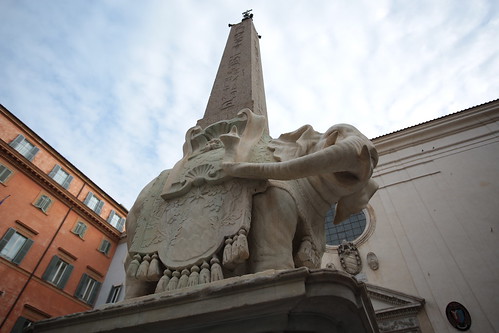 We continue our tour leaving the ghetto area. In Piazza Della Minerva, next to the Pantheon, it’s located the Bernini’s Elephant-obelisk: in Rome, it is a very famous work, but its meaning seems to be unknown to most. For this work, the artist has copied an engraving found in the Hypnerotomachia Poliphili, an allegorical novel published in Venice in 1499. In the novel it is possible to enter inside the elephant itself, where a man and a woman are represented: this elephant, therefore, would indicate the resurrection of the flesh. The work was requested to Bernini by Pope Alexander VII in 1667 and was built where there was an ancient temple of Isis.
We continue our tour leaving the ghetto area. In Piazza Della Minerva, next to the Pantheon, it’s located the Bernini’s Elephant-obelisk: in Rome, it is a very famous work, but its meaning seems to be unknown to most. For this work, the artist has copied an engraving found in the Hypnerotomachia Poliphili, an allegorical novel published in Venice in 1499. In the novel it is possible to enter inside the elephant itself, where a man and a woman are represented: this elephant, therefore, would indicate the resurrection of the flesh. The work was requested to Bernini by Pope Alexander VII in 1667 and was built where there was an ancient temple of Isis.
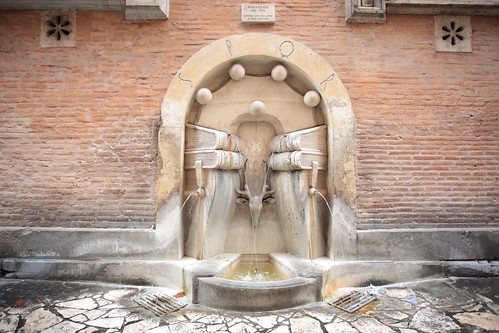 In Via degli Staderari, a crossroads of Corso del Rinascimento, there is the Books’ fountain. I hadn’t planned this stop because I had not read anything and I had not intended to go through this road during my tour, but the case can play lovely cards. Via Degli Staderari takes its name from the ancient manufacturers of scales and scales that once were in this area. The fountain is located inside a niche crowned with a round arch, and inside there is a deer head between four ancient books (on two side shelves, two books on each shelf). The deer, for those not familiar with the Roman districts, is the symbol of the area of S. Eustachio. Exactly next to the fountain there are two other walled doors, about which I could not find any kind of information.
In Via degli Staderari, a crossroads of Corso del Rinascimento, there is the Books’ fountain. I hadn’t planned this stop because I had not read anything and I had not intended to go through this road during my tour, but the case can play lovely cards. Via Degli Staderari takes its name from the ancient manufacturers of scales and scales that once were in this area. The fountain is located inside a niche crowned with a round arch, and inside there is a deer head between four ancient books (on two side shelves, two books on each shelf). The deer, for those not familiar with the Roman districts, is the symbol of the area of S. Eustachio. Exactly next to the fountain there are two other walled doors, about which I could not find any kind of information.
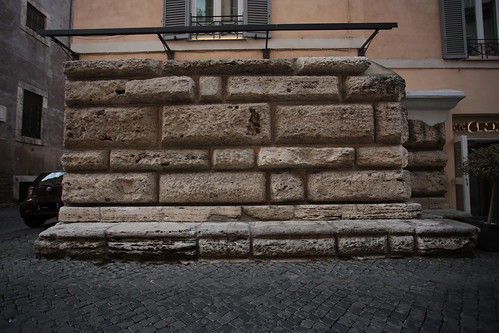 I conclude this tour talking about the Via Giulia’s sofas, located between via del Gonfalone and alley of Cefalos, well hidden in the historic centre. I was not able to identify them immediately because, reading the indications on the book, I had imagined that it was a single block that ran Via Giulia from one side to the other and instead is much smaller! But back to the sofas: Pope Julius II Della Rovere asked Bramante to realise a project that would incorporate the papal tribunals into a single building and what we now call “Via Giulia’s sofas” at the time were the foundations of this building! 150 years later, Pope Innocent X Pamphilj places the new prison of the city in the building, and today there is the headquarters of the Italian Anti-Mafia Investigation Directorate.
I conclude this tour talking about the Via Giulia’s sofas, located between via del Gonfalone and alley of Cefalos, well hidden in the historic centre. I was not able to identify them immediately because, reading the indications on the book, I had imagined that it was a single block that ran Via Giulia from one side to the other and instead is much smaller! But back to the sofas: Pope Julius II Della Rovere asked Bramante to realise a project that would incorporate the papal tribunals into a single building and what we now call “Via Giulia’s sofas” at the time were the foundations of this building! 150 years later, Pope Innocent X Pamphilj places the new prison of the city in the building, and today there is the headquarters of the Italian Anti-Mafia Investigation Directorate.
Unusual Rome: ghetto and historic center
